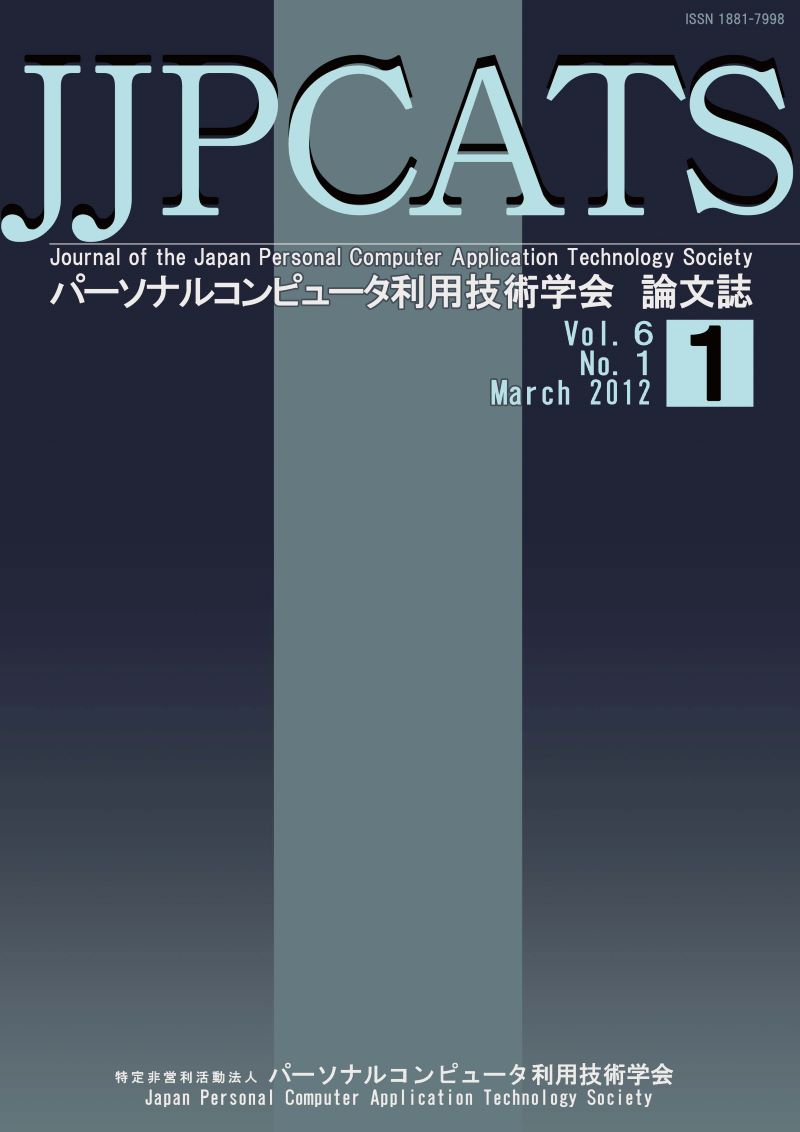Volume 6, Issue 1
Displaying 1-8 of 8 articles from this issue
- |<
- <
- 1
- >
- >|
-
2012 Volume 6 Issue 1 Pages H1
Published: 2012
Released on J-STAGE: March 22, 2020
Download PDF (285K) -
2012 Volume 6 Issue 1 Pages H2
Published: 2012
Released on J-STAGE: March 22, 2020
Download PDF (229K) -
2012 Volume 6 Issue 1 Pages T1
Published: 2012
Released on J-STAGE: March 22, 2020
Download PDF (136K) -
2012 Volume 6 Issue 1 Pages T2
Published: 2012
Released on J-STAGE: March 22, 2020
Download PDF (381K) -
2012 Volume 6 Issue 1 Pages 10-18
Published: 2012
Released on J-STAGE: March 26, 2020
Download PDF (467K) -
2012 Volume 6 Issue 1 Pages 19-23
Published: 2012
Released on J-STAGE: March 26, 2020
Download PDF (2039K) -
2012 Volume 6 Issue 1 Pages 30-35
Published: 2012
Released on J-STAGE: March 26, 2020
Download PDF (1289K) -
2012 Volume 6 Issue 1 Pages 45-49
Published: 2012
Released on J-STAGE: March 24, 2020
Download PDF (7890K)
- |<
- <
- 1
- >
- >|
